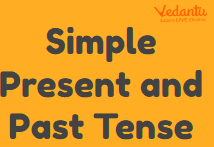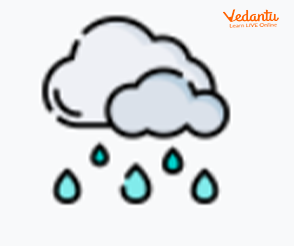




What are Tenses?
The tense of a verb is the part of the verb that indicates when an action occurred and if it was completed. The tense of a verb is the shape it takes to express the action's timing. Different times are expressed using tenses. An action or event could have happened in the past, be happening now, or in the future. We can't comprehend tenses without first grasping the concept of verbs. It is here that we grasp the topic of the sentence and the time when it occurred by conjugating verbs which means changing the form of action according to the sentence.

Tenses
Types of Rules Tenses
The following chart of tenses shows rules to form and write sentences based on simple present tense rules and all other forms of tenses.
Simplifying Tenses with Examples
Present, past and future tenses are a simple way to understand the way to categorize the tense structure. However, it is also important to note that these tenses can be further divided into four other kinds, perfect, simple, perfect continuous and continuous. So for instance, Past tense can be simple past tense, past perfect continuous etc. Let us understand through examples the way to write, types of the present tense, past tense and future tense through the tenses chart.
Fun Practice Questions
A. Fill in the blanks with the correct form of a verb
1. He ____ football.
plays
played
will play
All of the above

Football
Ans: D. All of the above
2. The sun ______ us light and heat.
gives
gave
given
None of the above

Sun
Ans: A. gives
3. They ____ four months ago and are now married.
meet
met
will meet
are going to meet

Couple
Ans: B. met
Do it Yourself
A. Fill in the blanks with the correct form of a verb
1. I ____ the burger at the mall last evening.
eaten
eat
ate
eating

Burger
2. It ________ rain tomorrow.
will
is
will be
All of the above

Rain
3. Sara _____ home very late last night.
came
went
will go
Both A and B

A Girl
FAQs on Elementary Idea of Tenses: A Simple Introduction to Verb Tenses
1. What's the best way to explain Tenses?
In grammar, the meaning of tense is a verb's characteristic that shows the time in which an act, state, or situation occurs or occurred. In English, there are three tense groupings that encompass past, present, and future. The past refers to completed events, future represents the events that are yet to take place. Ans general truths are expressed in the present tense.
2. What are Tenses and their types?
The three main categories of Past, present and future tenses are separated into four categories: Simple, Continuous, Perfect and Perfect Continuous Tense.
3. What is the purpose of Tenses?
Tenses are used in spoken and written communication to denote the time when something happened. The incorrect use of tenses may lead to misunderstanding and misinterpretation of the sender's message. The main purpose is to convey the correct message to the reader or listener. The tenses serve their purpose for better understanding and communication.









